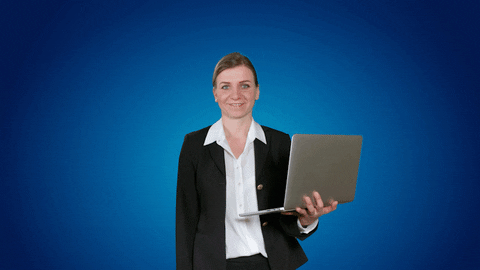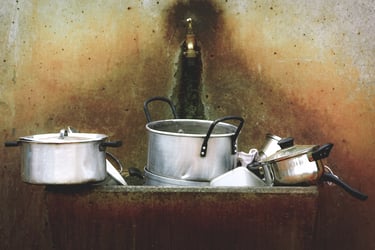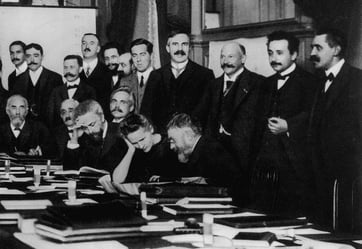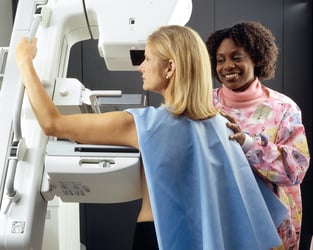'I want to leave my mark on the world!’
We've all said it at some point in our lives. We want to do something for which we will be remembered, long after we're gone.
We often hear about the great feats that shaped the world, more often than not performed by men - and yes, they're pretty impressive - but many of the accomplishments in history have also been achieved by women who refused to simply sit by as a spectator.
Let's look back at some of the most notable female trailblazers...
“One can perfectly well philosophise while cooking supper."
-Sor Juana Inés de la Cruz of Mexico, 1691, Nun / Writer

Agnodice – 400BC Greece – Gynaecology and Female Physicians
You may not have heard of her, but Agnodice was one of the first female gynaecologists in a time when women were put to death for practising medicine. When she was caught her patients came to her defence and she was permitted to continue her work, and the law against women practising medicine in Greece was also revoked.
Cleopatra – 30BC Egypt – Egyptian Pharaoh
Cleopatra (for those living under a rock) was the last active Pharaoh of Egypt before the Roman occupation in the 1st Century BC. During her reign, she ruled over multiple nations, spoke multiple languages (including Egyptian - unlike her male Ptolemaic predecessors), influenced politics in multiple countries across the known world, led a fleet into battle, and inspired art and literature for thousands of years after her death.
DID YOU KNOW?
Of the Seven Wonders of the Ancient World, two were created by women:
the Hanging Gardens of Babylon (planted by Semiramis, Queen of Assyria)
and the Mausoleum of Halicarnassus (built by Artemisia, Queen of Caria).
Ada Lovelace – 1843 England – Computer Programming
The Countess of Lovelace was the first (and suspected only legitimate) child of poet Lord Byron (yes, that Lord Byon) and is credited with inventing the first computer algorithm. At the time she was translating notes from Italian to English on Charles Babbage’s Analytical Engine and added her own notes to the translation that resulted in the world’s first version of the ‘computer program’.

Josephine Cochran – 1872 USA – Dishwashers
We have Cochran to thank for the invention of the dishwasher in 1872. Other prototypes already existed but Cochran created the most efficient version, using water pressure instead of scrubbers to clean dishes.
DID YOU KNOW?
The highest IQ score in recorded history belongs to
Marilyn von Santos, a columnist and author from the USA.
Maria Beasley – 1880 USA – Life Rafts
The first collapsible life raft was invented by Beasley in 1880, having already patented the foot warmer and barrel-hooping machine (a machine that secures metal hoops around wooden barrel planks). The life raft included airtight containers for food storage, and an updated patent two years later included guardrails and was invertible in the event of capsizing.

Anna Connelly – 1887 USA – Fire Escapes
In the days before electricity was common in homes and buildings, the risk of fire and subsequent fatalities was high. Enter Anna Connelly, who invented the external metal staircase that saved countless lives and revolutionised New York City building codes.
DID YOU KNOW?
Kevlar, the material used in bullet-proof vests, was discovered by
Stephanie Kwolek in 1966 while searching for a strong plastic
to use in car tires.
Marie Curie – 1896 France – Radioactivity, Polonium and Radium
Curie, born in Poland, was a scientist who discovered radioactivity, polonium and radium. She was the first woman to win a Nobel Prize and the first person to win the prize twice. She also developed the first mobile x-ray machine during WW1, was the first woman to become a professor at the University of Paris in 1906 and was the only woman to attend the Solvay Conference in 1911, where she became close friends with up-and-coming Albert Einstein. Many movies, TV episodes and documentaries have been made about Curie's life and achievements.

Wilhelmina Wylie and Sarah Durak – 1912 Australia – Swimming
Wylie and Durak were the first Australian women permitted to compete against men in the 1912 Olympic Games in Stockholm. They blew their male competitors out of the water and paved the way for women to compete in the future.
DID YOU KNOW?
The computer code that put men on the moon during the Apollo 11
mission was written by a team led by Margaret Hamilton in 1969.
Edith Cowan – 1921 Australia – Politics
At age 59, Cowan became the first woman to stand for Federal Parliament after a long career as a member of more than 20 charity and community boards where she campaigned for women’s suffrage, influenced the building of a women’s hospital, orchestrated support for returned WW1 soldiers, founded the Children’s Protection Society, and more.

Hedy Lemarr – 1942 USA – Frequency-hopping Signals
Can’t live without Wi-Fi? Thank Austrian-born actress Hedy Lamarr! She may have never received any formal training in science or engineering, but she liked to tinker in her spare time and co-developed a frequency-hopping signal technology that stopped enemy forces from jamming torpedo guidance signals during WW2. Subsequent advances in wireless communication have been used in things like Bluetooth, GPS and Wi-Fi.
DID YOU KNOW?
Female-led countries such as New Zealand, Germany and Iceland
(just to name a few) were internationally recognised for implementing
a more effective response to the Covid-19 pandemic than their male-led
counterparts. Collectively, their more prompt and decisive action plans
resulted in fewer fatalities.
Judith Love Cohen – 1970 USA – Space Flight Abort-Guidance System
Cohen, a mathematics prodigy, engineer, and all-round multitasking queen, solved issues with the NASA Abort-Guidance System that brought Apollo 13 home safely while she was in labour and then gave birth to American actor / musician / comedian Jack Black on the same day.
Dr Fiona Wood – 1993 Australia – Spray-on Skin
Plastic surgeon Fiona Wood, and development partner Marie Stoner, revolutionised the treatment of burns victims with their invention of ‘Spray-on Skin’ in 1993. The treatment used healthy samples of the patient’s skin to grow more skin cells over the course of 21 days and then spray them onto the affected burn areas. She was instrumental in saving multiple lives in the aftermath of the Bali bombing on October 12, 2005. Since its initial development, Wood has reduced the incubation period to just five days.

📷 National Cancer Institute via Unsplash
Dr Dharmica Mistry – 2018 Australia – Breast Cancer Research
Mistry and her team at Breast Cancer-Associated Lipid (BCAL) Diagnostics have pioneered a groundbreaking method of detecting breast cancer during its early stages through blood tests. The BCAL test has revolutionised the industry and is the future of the early detection of breast cancer, which could save thousands of lives per year – both men and women.
So many women have made their mark on the world, and there is so much to celebrate on International Women's Day. What achievements will you be celebrating this year?